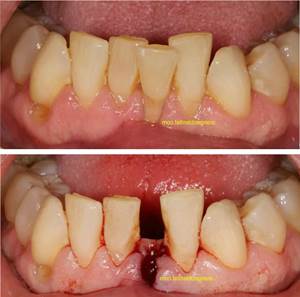Dry socket Causes, Symptoms, Diagnosis and treatment

What Is A Dry Socket?
Medically known as alveolar osteitis, dry socket is a dental condition marked by inflammation which occurs in the alveolar bone. It is a classic post operation complication of tooth extraction.
Alveolar osteitis usually occurs where the blood clot fails to form or is lost from the socket, which is the defect left in the gum when a tooth is taken out. This leaves an empty socket where bone is exposed to the oral cavity, causing a localized alveolar osteitis limited to the the bone which lines the socket.
It is associated with increased pain, which starts few days after tooth extraction, and delayed healing time. It usually occurs in 5% of routine dental extractions and 30% in wisdom teeth extraction.
Treatment is required in order to relieve symptoms.
Causes Of Dry Socket:
The underlying cause of dry socket is not yet fully understood.
Usually, after tooth extraction, blood is leaks into the socket, and a blood clot is formed. The blood clot is eventually replaced with granulation tissue, which is then replaced by coarse, fibular bone and finally by a mature woven bone.
This clot may not from due to:
- Poor blood supply, which may be caused by
Smoking
Problems in bone density - Excessive mouth rinsing
- Plasminogen
- Trauma
- Bacteria which may secondarily colonize the socket, and lead to further dissolution of the clot.
In a dry socket, healing is delayed because tissue must grow from the surrounding gingival mucosa, which takes longer than the normal organisation of a blood clot.
Risk Factors Of Dry Socket:
- Tobacco use
- Smoking
- Using Oral contraceptives.
- Having dry socket in the past.
- Developing a tooth or gum infection.
- Use of corticosteroids.
Symptoms Of Dry Socket:
Symptoms include:
- Dull, aching, throbbing pain in the area of the socket, which is moderate to severe and may radiate to other parts of the head such as the ear, eye, temple and neck.
- The pain normally starts on the second to fourth day after the extraction, and may last 10–40 days.
- The pain may be so strong that even strong analgesics do not relieve it.
- Intraoral halitosis (oral malodor).
- Bad taste in the mouth
- Partial or total loss of the blood clot at the tooth extraction site,
- Visible bone in the socket
- Swollen lymph nodes
- Slight fever
Diagnosis Of Dry Socket:
Dry socket can be diagnosed via:
- An examination
This involves gentle irrigation with warm saline and probing of the socket to establish the diagnosis. - A dental radiograph (x-ray) may be indicated to demonstrate a suspected fragment.
Treatment Of Dry Socket:
Dry socket may be treated in the following ways:
- Flushing out the socket.
- Medicated dressings.
- Pain medication.
- Self-care.
By : Natural Health News




